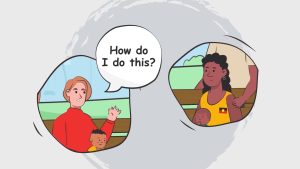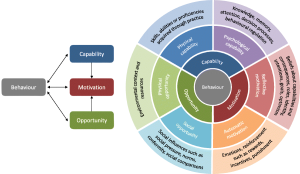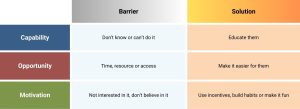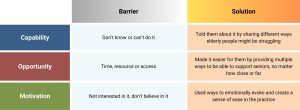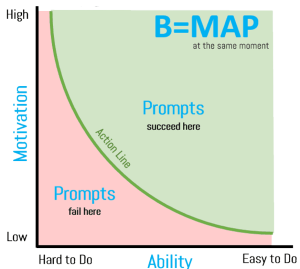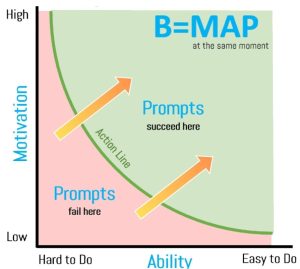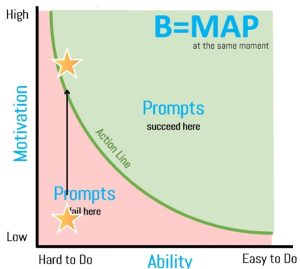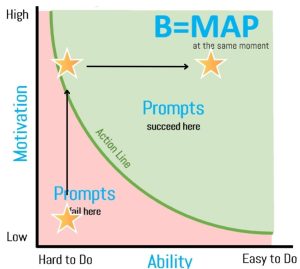Have you ever read a book only to reach the final chapter and feel utterly disappointed? Or left the cinema…
Read MoreHow to Leverage Behavioural Science for More Impactful Messaging
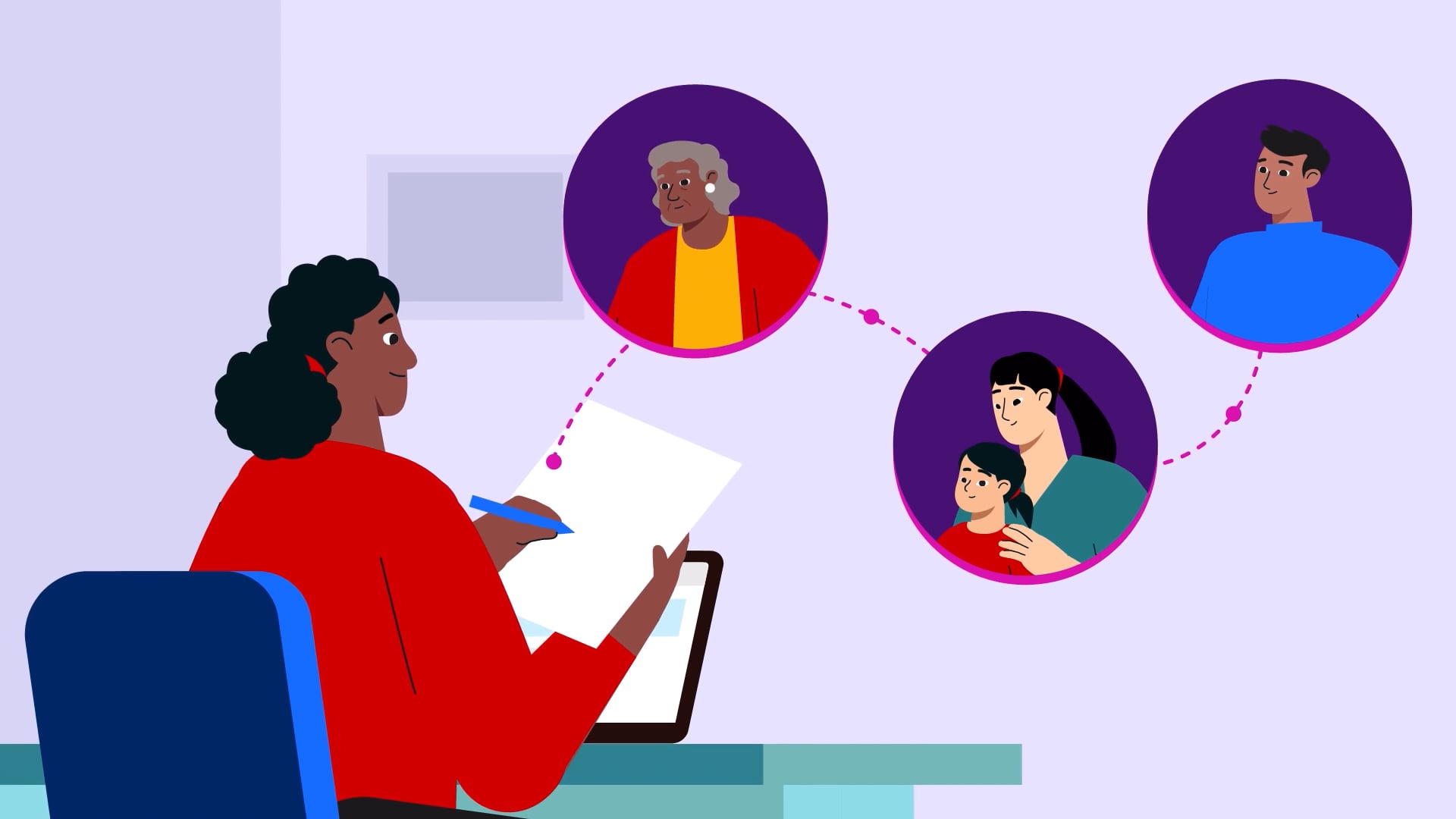
What truly drives your audience to take action? The key is understanding what enables them to act, what motivates them, and the opportunities they need to engage.
With message fatigue and limited attention making it harder for content to land, behavioural science offer a way to cut through the noise. They help create sharper, more targeted interventions that drive real change.
Last week, Punchy’s Founder, Anthony Lam, sat down with strategic communications expert, Rachel Abad, to explore the role of research and behavioural psychology in campaign strategy and content creation. The webinar, Insight to Impact: Behavioural Science for Tailored Messaging, was packed with valuable insights—so we’ve summarised the key takeaways here.
You can watch the full recording here.
Who Is Your Audience?
The first step in creating any message, strategy, or campaign is knowing exactly who the audience is. It seems obvious, but it’s surprising how often this is overlooked.
Many teams launch campaigns without a clear understanding of who they’re speaking to—or why. Some even try to target ten different audience groups at once, making it impossible to craft messages that resonate.
It’s fine to have secondary or tertiary audiences, and to shift key messages depending on who you’re engaging with, but you need a clear primary audience in mind. Without it, messaging loses focus and impact.
Why Understanding Your Audience Matters
Imagine everyone living inside their own bubble. Each bubble is shaped by personal experiences, values, routines, emotions, inspirations, and beliefs. While these bubbles sometimes overlap—sharing habits, lifestyles, or interests—each one is unique.
By understanding the factors that shape someone’s bubble, communicators can design messages that align with their values, address their needs, and help overcome barriers. Effective messaging speaks directly to who they are and what they care about.
Here’s what understanding your audience allows you to do:
- Align with core values. Tap into what people actually care about.
- Solve real problems. Address pain points and barriers, helping people take the next step.
- Tell a story. Stories are memorable. Statistics can support them, but stories are what people connect with and remember.
The COM-B Behaviour Model
The first behaviour change model to explore is the COM-B model.
This framework is widely used, not just in communication and campaign design but also in clinical and personal settings. Psychologists often reference COM-B when supporting clients in making significant behavioural shifts—whether it’s quitting smoking, starting meditation, or rebuilding relationships. Its strength lies in its simplicity and broad applicability.
At its core, the COM-B model breaks down behaviour into three essential elements:
- Capability
- Opportunity
- Motivation
For a behaviour to occur—or change—all three areas need to be addressed. If even one is lacking, change becomes much less likely. If we look at each element, there are a few questions we can ask to see whether behaviour change is even possible.
Capability
- Do they have the skills to do this?
- Do they understand what’s being asked of them?
Motivation
- What is their perception of this behaviour?
- How does it connect to their aspirations?
- Do their values align with it?
Opportunity
- Can they afford it?
- Do they have the time?
- Is it easy for them to do?
- Are other people doing it?
The role of communication often involves strengthening these elements.
We’ve created the cheat sheet below to help you apply this model to your audience, with practical ways to address gaps in capability, opportunity, or motivation.
Case Study: RUOK?
This campaign was developed for RUOK as part of their Your Natter Matters initiative. It specifically targeted Australians aged 65 and over, encouraging meaningful conversations to reduce isolation and improve wellbeing.
Now, let’s apply the COM-B model to assess whether the campaign effectively enabled behaviour change.
Target Behaviour
The goal was to encourage people to engage with and support seniors in their community—specifically to initiate more meaningful conversations with elderly individuals.
Capability
The video effectively increased capability by educating viewers on the issue. It highlighted how seniors may be struggling with loneliness or stigma around discussing their feelings. It also debunked common misconceptions and demonstrated simple, practical ways people could offer support—whether by making a phone call or joining a community initiative. This addressed both cognitive capability (understanding the issue) and physical capability (knowing what actions to take).
Motivation
The campaign tapped into motivation by eliciting an emotional response. It made the audience aware of the silent struggles many seniors face and inspired a sense of empathy and urgency. By framing the issue in relatable terms—how confusing and isolating it can be to lose independence—the campaign encouraged people to act in support of their elderly loved ones or community members.
Opportunity
The video lowered barriers by providing multiple ways to get involved. It showed that offering support doesn’t have to be time-consuming or complicated. Viewers were encouraged to make a simple phone call, visit someone for a chat, or volunteer with a local community group. This expanded opportunities for action, making it easier for people to take the next step.
Let’s revisit our COM-B cheat sheet.
- If people didn’t know there was a problem, the video educated them.
- If they thought they didn’t have time, it offered simple, low-effort actions.
- If they lacked motivation, the emotional storytelling provided a compelling reason to engage.
By addressing capability, motivation, and opportunity, the Your Natter Matters campaign demonstrated how behavioural insights can drive meaningful change.
The Fogg Behaviour Model
The next behaviour change framework is the Fogg Behaviour Model, developed by Dr. BJ Fogg.
This model captures a simple but important truth about human behaviour: people need motivation, they need the action to be easy, and they often need a prompt or nudge to take action.
It’s a useful reminder that effective messaging requires an honest understanding of the audience’s ability and access. Assumptions—such as thinking people know more than they do or are more motivated than they actually are—can lead to communication that misses the mark. The Fogg model encourages a realistic, empathetic view of audience behaviour.
The framework consists of three key elements:
- Motivation
- Ability
- Prompt (also referred to as a trigger or nudge)
For a behaviour to occur, all three must converge at the same moment. If one is missing, behaviour change is unlikely.
- Motivation is plotted on the vertical axis—ranging from low to high.
- Ability is on the horizontal axis—focusing on how easy or difficult the action is.
- The Prompt is the external or internal cue that triggers the behaviour.
The model shows that even if motivation is high, if the action is too difficult, the behaviour won’t happen. Likewise, if something is easy to do but motivation is low, action may still not occur. The prompt only works when motivation and ability are aligned.
For visual learners, the model clearly illustrates the relationship between these three factors. The goal is to move above the “action line,” where motivation is high enough and the behaviour is easy enough to complete. That’s where behaviour change happens.
Case Study: Victorian Disability Workers Commission Campaign
In 2023, a campaign was developed in collaboration with Olivia, David, and Melinda from Ellis Jones for the Victorian Disability Workers Commission. The campaign aimed to increase awareness of Victoria’s voluntary registration process for disability workers and encourage them to register.
To assess the campaign’s approach to behaviour change, we can apply the Fogg Behaviour Model by examining motivation, ability, and prompts.
Motivation
Motivation was identified early on as a potential challenge. Because the registration was voluntary, there was little external pressure for disability workers to take action. To address this, the campaign focused on emotionally engaging messaging—leaning into the concept of purpose.
Research shows that a strong sense of purpose increases the likelihood of action, persistence through challenges, and a sense of control. The campaign tapped into the shared purpose between disability workers, people living with disability, and their families: to care for people and to create safe, supportive environments.
Messaging aimed to foster this shared purpose, elevating motivation by focusing on the positive impact registration could have on safety and trust within the community.
Ability
The team also recognised that ability could be a barrier. Government application processes are often perceived as complex and time-consuming, which can discourage action.
The solution was to simplify and clarify the process through communications. Fact sheets and social media explainers were developed to break down the steps involved and provide clear, transparent information on how long registration would take. This helped set realistic expectations, making it easier for workers to plan and complete the process.
By reducing complexity and providing guidance, the campaign improved perceived ability—making registration feel more achievable.
Prompts
Finally, the campaign integrated clear and timely prompts to encourage action. Calls to action were designed to be sharp, motivating, and aligned with the overarching purpose of safety and care. Examples included:
- “Show people that safety matters”
- “Be the safe choice”
These prompts served as nudges, reinforcing motivation while providing clear direction on what to do next.
By addressing all three elements of the Fogg Behaviour Model—motivation, ability, and prompt—the campaign worked to create the right conditions for behaviour change.
How Can You Apply This Thinking Today?
You don’t need to start with complex behavioural models to make your messaging more effective. Here are a few practical techniques you can apply right now:
1. Concept Testing
Test your ideas before rolling them out. This could be through focus groups with your target audience or by sharing options internally to get stakeholder input. Just be clear about the purpose of the feedback and how it will (or won’t) be used—especially if you want to avoid unnecessary debate. Testing helps you understand what actually resonates.
2. Behavioural Nudges
Include behavioural nudges in your communications. These small adjustments can make a big difference:
- Use social proof (“Others are already doing this”).
- Tap into emotion.
- Make it fun or engaging.
- Offer incentives.
Nudges help reduce friction and prompt action.
3. Check Your Message
Ensure your message covers all the information someone needs to take the next step. If you’re asking them to fill out a form, include the link. If it’s an event, give them the time, location, and even the dress code. A simple way to test this is to ask: Does this answer all the obvious questions? If not, have I made it clear where they can find the answers?
Final Thoughts
Behavioural science offers practical frameworks to create messaging that cuts through and drives action. Whether it’s defining your audience, understanding their motivations and barriers, or applying models like COM-B and Fogg to shape campaigns, these insights make communication more targeted and effective.
At Punchy, we’re now collaborating with Rachel Abad to deliver strategic communications and campaigns grounded in behavioural research. If you want to craft messaging that resonates and creates real impact, we’re here to help.
Get in touch to learn more. Or, if you’re just starting out with video campaigns and unsure where to begin, download our Punchy Starter Pack. It’s a 4-in-1 resource with guides, templates, and examples to help you take the first step.
